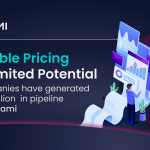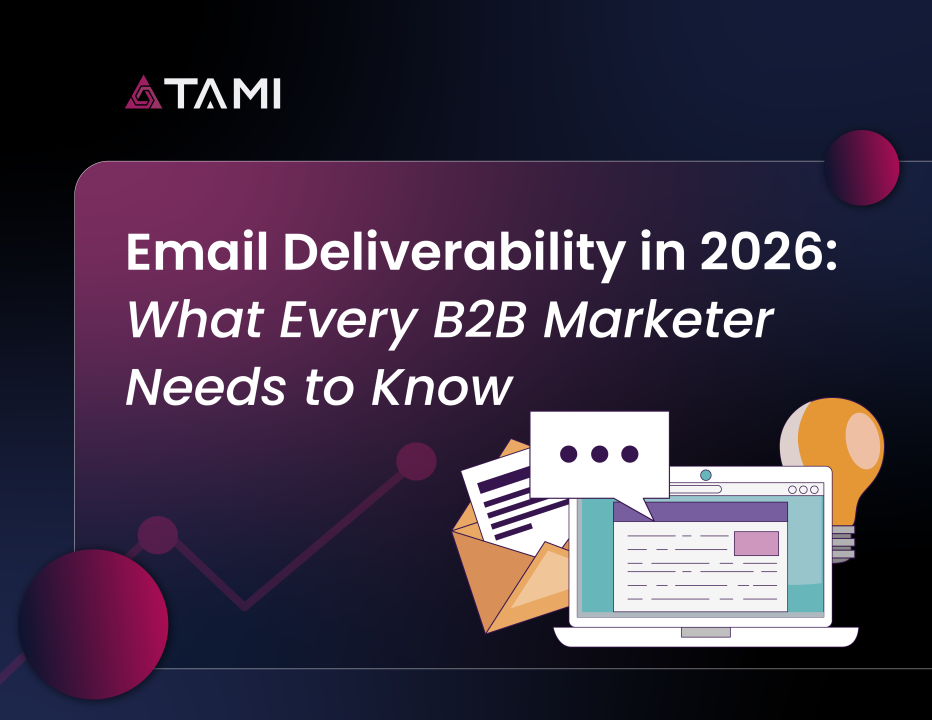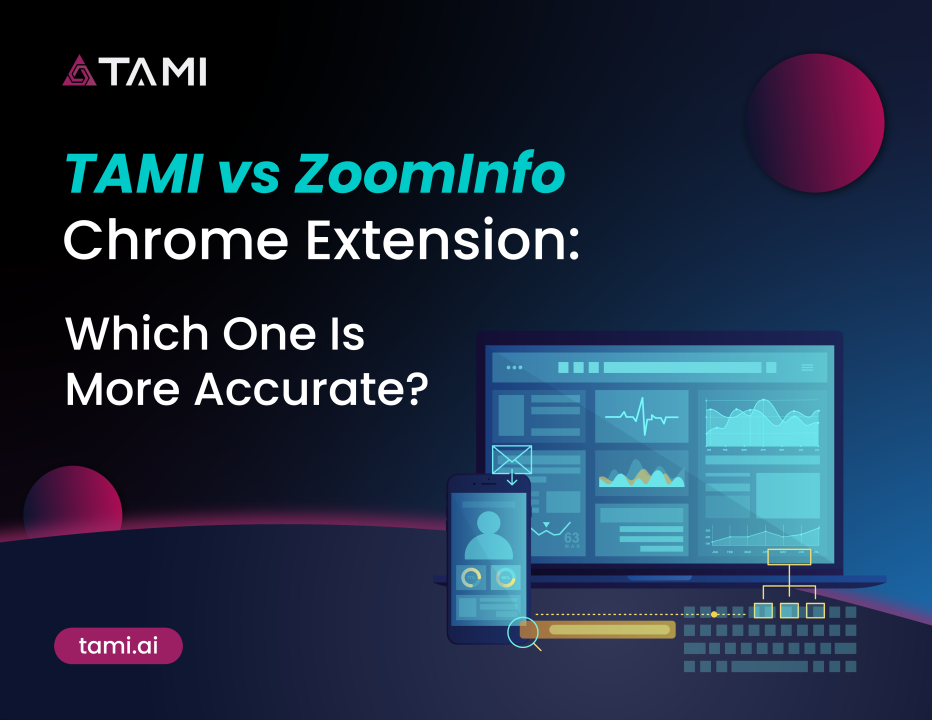
Big News: TAMI Has a New Pricing Page
11/06/2025
Why Your SDR Sales Team Is Wasting Time on the Wrong Leads
18/06/2025If your B2B campaigns are falling flat despite solid messaging and targeting, the problem might not be your strategy, it might be your data. More specifically, your dirty B2B data.
Dirty B2B data is one of the most persistent, expensive, and overlooked threats to modern marketing efforts. It quietly rots performance, sabotages segmentation, drains budgets, and undermines the credibility of your entire go-to-market engine. Yet few teams make it a priority until it’s too late.
In this article, we’ll unpack what “dirty data” really looks like, how it’s silently ruining performance in industries like ecommerce and logistics, and why clean, industry-related data isn’t just a nice-to-have, it’s the foundation of successful modern marketing.
Why B2B Data Is the Real Campaign Killer
At a glance, your campaign setup might look perfect. Great creative. Compelling offer. Refined ICP. But none of that matters if the list you’re targeting is riddled with inactive contacts, old job titles, or companies that went dark months ago.
This is the quiet failure point of many campaigns. Dirty B2B data shows up as low open rates, high bounces, lack of replies, or clicks from irrelevant companies. Most marketers blame the channel or the creative, but often, the real issue sits in the spreadsheet.
According to Data8, around 30% of B2B data decays every year. That includes job changes, promotions, company shutdowns, and organizational reshuffles. In fast-moving industries, that rate can be even higher. If your database hasn’t been updated in the last three months, a large chunk of your contacts are likely already invalid.
The financial impact is staggering. Harvard Business Review reports that bad data costs U.S. businesses over $3 trillion annually, as one in four B2B records contains critical errors. That means you could be throwing away one-quarter of your campaign budget before a single email is sent.
What Dirty Data Looks Like in Practice
Let’s get specific. Dirty data isn’t just an abstract problem — it has very real symptoms.
Take the logistics industry. Many B2B marketers in this space build campaigns around targeting active ecommerce brands that ship products using providers like DHL or UPS. On paper, this sounds smart. But in reality, things often go wrong.
We’ve seen lead lists labeled “UPS ecommerce leads” that include companies no longer shipping, inactive storefronts, or ecommerce brands that switched to different carriers months ago. When those lists are based on outdated or misclassified tech stack data, campaigns fall apart before they begin.
The Cumulative Cost of Inaction
Dirty B2B data doesn’t just affect marketing, it poisons the entire revenue cycle.
Sales teams waste time chasing invalid contacts. SDRs burn hours following up with prospects who no longer work at the company. Personalization fails because job titles are incorrect or decision-makers have moved. CRM fields become inconsistent, bloated, and confusing. Teams begin to distrust their own systems.
Even marketing automation tools start to underperform. A campaign that relies on firmographic segmentation or behavioral triggers falls flat when the data beneath it is unreliable. Over time, this leads to a loss of alignment between sales and marketing, as each blames the other for poor results.
But the truth is simpler: if your data isn’t clean, nothing else works the way it should.
How TAMI Solves the Dirty Data Problem
Most data providers sell volume rows in a CSV file. TAMI does the opposite. It focuses on real-time accuracy, contextual enrichment, and campaign-ready insights.
Rather than rely on stale databases, TAMI continuously scans live internet signals to verify company activity, contact accuracy, and market status. It doesn’t just tell you that a company once used Shopify or accepted PayPal. Instead, it tells you if they’re actively selling, if their contact is still with the company, and if they’ve made a recent switch in technology.
In one case, a global logistics company turned to TAMI after three other vendors failed to deliver usable results. Their CRM contained over 6.5 million records, but it was bloated with duplicates, outdated contacts, and inactive businesses.
TAMI’s first step was to clean and enrich this massive dataset, and the platform achieved a 99% match rate during deduplication. From there, TAMI identified which companies were active, which were shipping internationally, and which had viable growth signals.
By focusing only on valid, opportunity-ready leads, the company was able to generate $35 million in new pipeline in under eight weeks, all attributed to clean, actionable data.

Similarly, a MarTech company compared campaign performance using B2B data from BuiltWith, Zoominfo, and Cognism against TAMI. The result: TAMI delivered a 10X higher conversion rate, thanks to cleaner segmentation and a real-time understanding of the companies they were engaging.
What made the difference? It wasn’t just cleaner emails. It was the ability to act on verified job changes, firmographic shifts, and live enrichment signals that other vendors missed entirely.
The Logistics Advantage: Campaigns That Actually Work
For B2B teams in the ecommerce and logistics verticals, clean data is a growth multiplier.
When targeting companies that use UPS or DHL, for instance, timing is critical. A brand that’s expanding into new markets, switching providers, or increasing shipping volume is a high-intent prospect. But if your data is based on outdated tech stack tracking or third-hand enrichment, you’ll miss the window, or worse, contact the wrong person entirely.
TAMI’s logistics dataset includes real-time indicators like:
- Whether a merchant is actively shipping internationally
- Which payment and shipping tools are in use right now
- Whether the company is growing, stagnant, or shutting down
- Contact-level job changes and organizational shifts
That level of detail allows marketers to run DHL targeting campaigns with precision, not guesswork. It turns a broad list of ecommerce stores into a qualified pipeline of logistics-ready prospects.
Stop Letting Bad Data Ruin Good Campaigns
You wouldn’t send an ad with broken links. You wouldn’t launch a product with outdated pricing. But every day, marketing teams run campaigns built on data that’s weeks, months, or years out of date and hope for the best.
It’s no longer enough to have “enrichment.” You need real-time B2B data that is:
- Verified at the contact and domain level
- Matched to your actual ICP
- Contextual, dynamic, and CRM-ready
- Updated continuously, not quarterly
That’s what TAMI delivers. And that’s why more teams are moving away from static lists and generic data providers, and toward intelligence that adapts as fast as their market does.
Final Thoughts
Dirty B2B data is the quiet killer of modern marketing. It doesn’t show up on a campaign performance chart, but it’s there, in every bounce, every low reply rate, every underwhelming conversion.
In industries like ecommerce and logistics, where timing and precision define success, the margin for error is even smaller. So, if your campaigns are underperforming, start with your data. And if you’re ready to fix it, TAMI is built to help. Book your free trial now!









